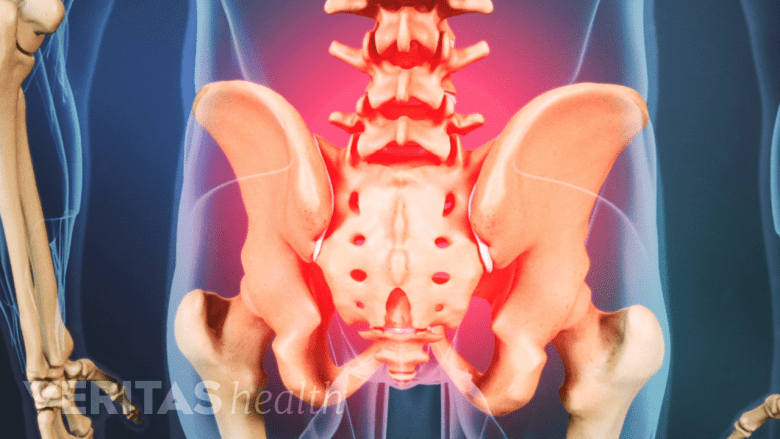In the majority of cases, an abdominal aortic aneurysm develops slowly with no symptoms or only minor symptoms, such as a gnawing feeling around the stomach or a throbbing sensation in the abdomen. This type of aneurysm may be detected in a standard physical exam or through monitoring for another condition.
When an abdominal aortic aneurysm does produce symptoms, the pain and discomfort are usually severe and immediately noticeable.
In This Article:
- Abdominal Aortic Aneurysm
- Abdominal Aortic Aneurysm Symptoms
- Abdominal Aortic Aneurysm Causes
- Abdominal Aortic Aneurysm Treatment
Recognizing Symptoms of Abdominal Aortic Rupture

Low back pain may result from abdominal aortic aneurysm.
Symptoms of abdominal aortic rupture can include some combination of the following:
Abdominal pain
A stabbing pain may be felt deep in the abdomen between the sternum and the belly button. Pain may be described as continuous and is not relieved by rest or changing positions. The pain can be so severe that it causes patients to double over, making it difficult to stand or straighten the upper body.
Low back pain
Abdominal pain may radiate into the low back due to the aorta’s proximity to the spine. Pain may also spread to the groin, pelvis, or legs.
Tenderness, pulsing sensation in the abdomen
A pulsating mass in the abdomen may be felt through the skin, and may be sensitive to touch or pressure. A doctor may try to recreate tenderness or pain to confirm the presence of an abdominal aortic aneurysm.
Low blood pressure
Significant blood loss results in low blood pressure, also called hypotension, which causes lightheadedness/dizziness, nausea or vomiting, blurred vision, and confusion. Symptoms tend to exacerbate when standing, making on feel the need to sit or lie down.
Symptoms of shock
Internal bleeding caused by a ruptured aneurysm can lead to shock, which includes symptoms such as a sudden and rapid heartbeat, shallow breathing, clammy skin and cold sweats, general weakness, and confusion, agitations or anxiety, and losing consciousness.
See Low Back Pain with Referred Pain
The above symptoms indicate a medical emergency, as symptoms usually develop once the aneurysm has ruptured or is expanding quickly. Patients who experience symptoms should receive prompt medical attention. Delay in treatment can lead to fatal internal bleeding.
Diagnosing an Abdominal Aortic Aneurysm

Several imaging techniques may be used to diagnose abdominal aortic aneurysm.
Most cases of an abdominal aortic aneurysm are found during screening for another condition. For example, during a routine physical, a doctor may feel by hand (called palpation) along the abdomen and find that the aorta is enlarged, suggesting that further testing is necessary.
See Getting an Accurate Back Pain Diagnosis
If an abdominal aortic aneurysm is suspected, the diagnosis will be confirmed using an imaging test. Diagnostic imaging tests may include one of the following:
- An ultrasound uses high-frequency sound waves to create an image of the inside of the body. Ultrasounds create live images of the body, showing blood moving through blood vessels and other bodily functions. There is no exposure to radiation from ultrasound screening.
- A CT scan (or computerized tomography) uses x-rays to produce detailed, cross-sectioned images of the body’s internal tissues, and can detect blockage and expansion of the body’s arteries.
- An angiography uses dye injected into the bloodstream and a standard imaging test (CT, X-ray, or ultrasound) to visualize blood vessels in the body and identify any abnormalities.
See Introduction to Diagnostic Studies for Back and Neck Pain
One-time screening for an abdominal aortic aneurysm is recommended for men over age 65 who have ever smoked cigarettes, even if they have no symptoms. It is up to a doctor’s judgment whether men older than 75, younger male smokers, or women smokers should be screened.1US Preventative Services Task Force. Final Recommendation Statement Abdominal Aortic Aneurysm: Screening. Published June 2014. Accessed October 18, 2016.
- 1 US Preventative Services Task Force. Final Recommendation Statement Abdominal Aortic Aneurysm: Screening. Published June 2014. Accessed October 18, 2016.

